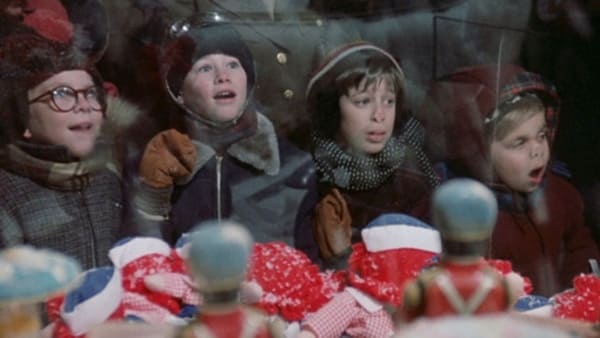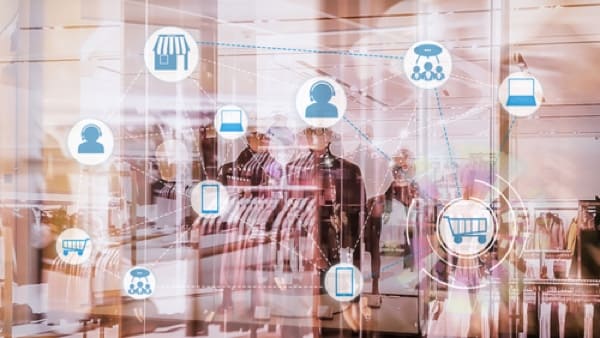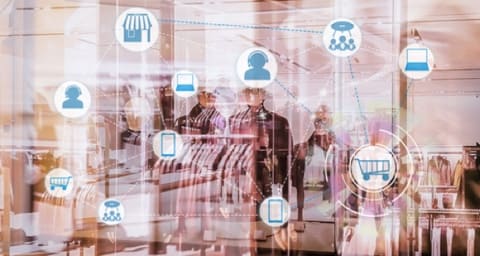Whether it’s because we recently rolled out our annual predictions post or that we blogged about the value of businesses keeping their eyes on the digital horizon, our team has discussed the future of marketing a lot lately. Within the context of the future, the customer experience – more specifically, how it’s changed and evolved alongside technology – often gets mentioned.
These things were on my mind when, over the holidays, I settled in to watch a classic holiday movie: A Christmas Story.
There’s a scene early in the movie where the main character, Ralphie Parker, and his friends press their noses up against the glass of a toy store, in awe of the display before them. We know Ralphie only has eyes for the Red Ryder BB gun, but the looks on the faces of the other boys say they’d be happy with any toy in the store.

The events of A Christmas Story take place circa 1940, which brings us to the reason the scene is relevant to the aforementioned discussions on the future of marketing. It’s obvious the customer journey has changed significantly over the last 75 years. And yet it may change more in the next five years than it has in the previous quarter century.
It seems impossible. Unfathomable. Outrageous. But do you want to get left behind because you refuse to adapt an experience your customers don’t want?
If your answer is no, then read on to discover how to deliver the experience your future customers expect.
Out With the Old Customer Journey
For a long, long time, the purchase journey of a customer remained exactly the same. And truth be told, it didn't have a whole lot to do with anything storeowners were doing.
Here's what the old customer journey looked like:
Visit store. Browse around. Make purchase.
Much like Ralphie and his friends, "shopping" was akin to pressing your nose up against a store's window and waiting for your brain to say, "I want, or I need, that item," whereupon you'd waltz into the store and buy it. Other than stocking shelves and operating the tills, storeowners didn't have to worry about getting into the minds of their customers.
The first step to delivering the experience your future customers expect is completely forgetting about this old customer journey. I know it's obvious that retail shopping has changed, but the mentality of the old journey is still something too many businesses are latched onto, even in our increasingly digital world.
Yes – some businesses operate their digital properties like the old customer journey is alive and well. They believe that as long as it's stocked and listed, customers will find their way to what they want and need.
In no uncertain terms, holding onto the old customer journey is a recipe for disaster. Getting rid of this archaic mentality will not only help to satisfy your future customers, it'll also ensure there are more of them!
In With the Modern Customer Journey

Today's digitally driven customer journey is, to say the least, much more complex than the days of old. Customers are smarter and willing to do significantly more work to ensure they make the right purchase. This goes for brick-and-mortar purchases and digital ones, with preference shifting to the latter. Here's what the modern customer journey looks like:
Consider product options. Research brands. Read reviews. Visit website and social profiles. Solicit reviews from friends and family. Make (digital) purchase.
As a quick example, let's say your brand sells dog food, both in a physical store and online. Your customers are most likely to follow a close variation of this path on their way to a purchase.
Consider product options, such as normal kibble, grain free kibble, raw or raw organic. Research brands: dog food brands and pet stores that sell dog food. Read reviews. Visit social media profiles and websites of dog food retailers. Ask family and friends about their brand experiences with dog foods and/or dog food retailers. Make purchase (in store, or preferably, online).
There are two important things to note about the modern customer journey: it's complex and it's digital. And one honest look around our world today tells us digital first companies are winning and will continue to win and survive. The rest won't.
Amazon is the biggest company in the world with $900 billion market capital. Sears, a brick and mortar staple in Canada, went bankrupt in 2017.
As the great Bob Dylan says, "the times they are a-changin." The only question is, how can you ensure your business survives and prospers well into the future?
Deliver the Experience Your Future Customers Expect
To deliver the experience your future customers expect, you must first be honest about where your digital activities are falling short.
We live in a digital economy full of endlessly evolving technologies. Every time consumer behavior evolves to new digital tech, brands and marketers must explore new channels. It's difficult but it must be done to keep pace.
The goal, then, is to figure out how and where to engage with and provide value to your audience in the digital space. Once you understand the kind of information your potential customers want – and where they go to get it – you can deliver an experience that falls in line with their expectations.
One final thought before I wrap up. The biggest pain point of the businesses we work with is, "there is no time for digital." Trust me when I say, do not let this be your excuse. Make time to find and define your digital audience and their wants and needs. Or find somebody to help you do it. Because only one thing is certain: businesses that don't get their digital act together won't survive.






